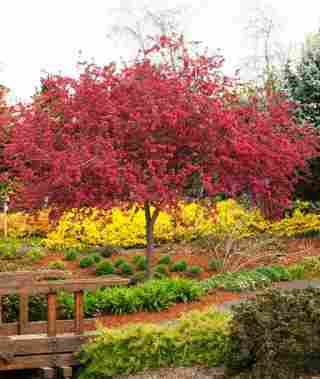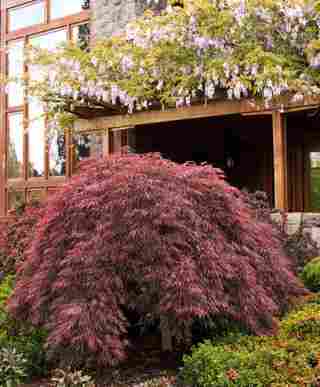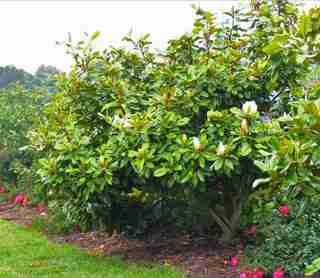Planting a tree is one of the biggest leaps of faith a homeowner can make—even more so when square footage is at a premium. “It can take years for a tree you’ve planted to reach its eventual height and width,” says Kate Karam, editorial director at California plant company Monrovia , “and only then will you know if you chose the right one—that’s a sobering thought!” But in recent years, breeders have been producing more and more scaled-down trees that are perfect for small yards. And they’re worth the investment: A tree creates a major focal point outdoors, one that pays off in such dividends as fragrant flowers, fall foliage, and a shady spot to laze away the afternoon. Here are Karam’s tips for choosing and caring for the right tree—along with four prime picks for small gardens.

Decide your wish list Are you mainly looking for a tree to provide shade? Add structure or bring pollinators to a garden? Burst with spring flowers? Figure out what’s most important to you, advises Karam. This Centurion Crabapple , for example, produces gorgeous, butterfly-attracting red blossoms in the spring and cherry-red fruit in the fall.

Be practical Once you’re at the nursery, don’t buy on a whim: “Read and believe the information on the plant tag!” emphasizes Karam. That means making a selection that is best suited for your space in terms of light and water conditions, and not buying a tree that will eventually dwarf your yard. And be prepared to wait for your planting to grow into its beauty. This Crimson Queen , a Japanese maple, is slow-growing but “worth the wait,” says Karam: Once it matures, it produces stunning foliage on delicately weeping branches.

Plant like a pro When you’re ready to introduce the tree to its new home, place the root ball either at ground level or a few inches above it; don’t amend the native soil or add fertilizer, says Karam. Putting plants around the tree base can bestow more design presence, but choose varieties that share the tree’s water needs and position them away from the tree’s roots—ideally, at the drip line, the circle on the ground that corresponds to where the tree canopy ends. This space-saving Baby Grand Magnolia is smaller than traditional ones, growing a maximum 10' h x 7' w.
Take care—but don't overdo it Add fertilizer the first few years, but if the tree is healthy by its fifth anniversary, you can stop. The same goes for pruning: Prune consistently the first few years to achieve the form you like; once the tree is five years old, prune it for shape but don't remove larger limbs. This Petite Plum Crape Myrtle tops out at five feet. “It fits in very small and awkward spaces where you want something showy but really don't want to have to stay on it to keep it sized right,” says Karam.
